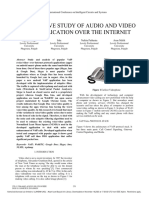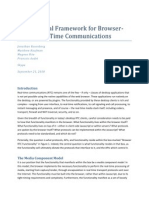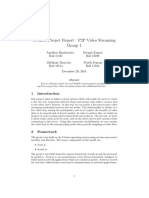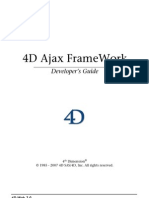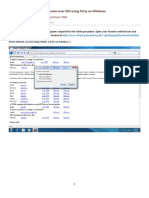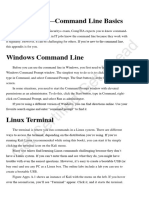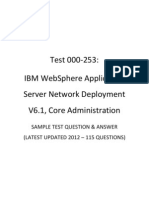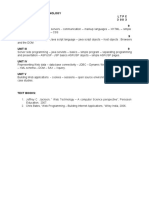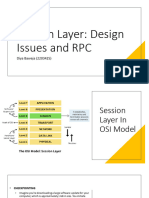0% found this document useful (0 votes)
24 views3 pagesTWP Structure Analysis
The document summarizes a study on developing a web-based video conferencing system using WebRTC. Key findings include:
1) A video conferencing website was designed that allows users to join real-time streaming video chats without installing software.
2) The system was tested across different operating systems, devices, and browsers. Test results showed the system could run on any device with any OS. Video quality depended on internet speed and server bandwidth.
3) The system uses WebRTC for real-time communication between browsers without plugins. It provides a secure, cross-platform solution for video conferencing over the web.
Uploaded by
ngocnguyentheCopyright
© © All Rights Reserved
We take content rights seriously. If you suspect this is your content, claim it here.
Available Formats
Download as PDF, TXT or read online on Scribd
0% found this document useful (0 votes)
24 views3 pagesTWP Structure Analysis
The document summarizes a study on developing a web-based video conferencing system using WebRTC. Key findings include:
1) A video conferencing website was designed that allows users to join real-time streaming video chats without installing software.
2) The system was tested across different operating systems, devices, and browsers. Test results showed the system could run on any device with any OS. Video quality depended on internet speed and server bandwidth.
3) The system uses WebRTC for real-time communication between browsers without plugins. It provides a secure, cross-platform solution for video conferencing over the web.
Uploaded by
ngocnguyentheCopyright
© © All Rights Reserved
We take content rights seriously. If you suspect this is your content, claim it here.
Available Formats
Download as PDF, TXT or read online on Scribd
/ 3




















